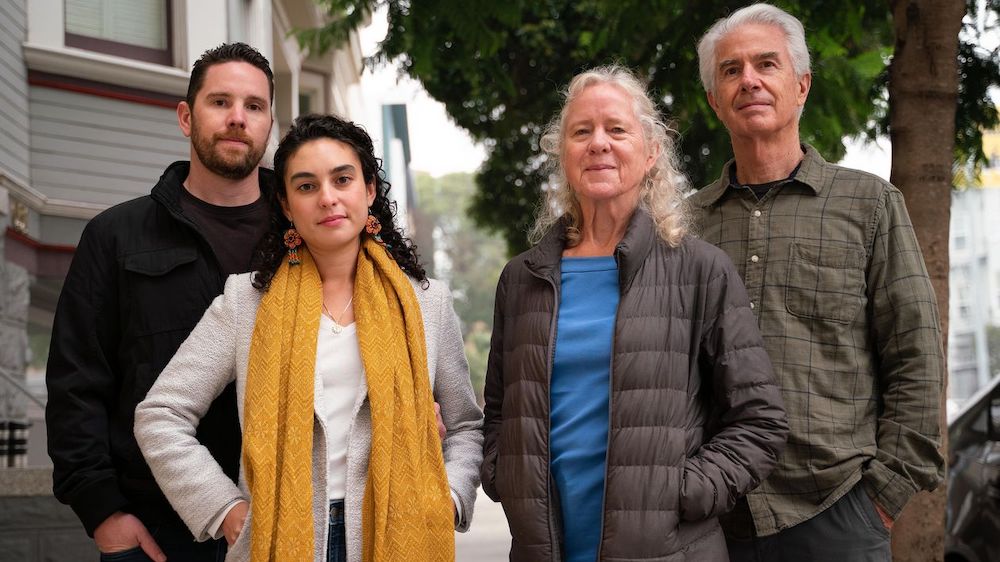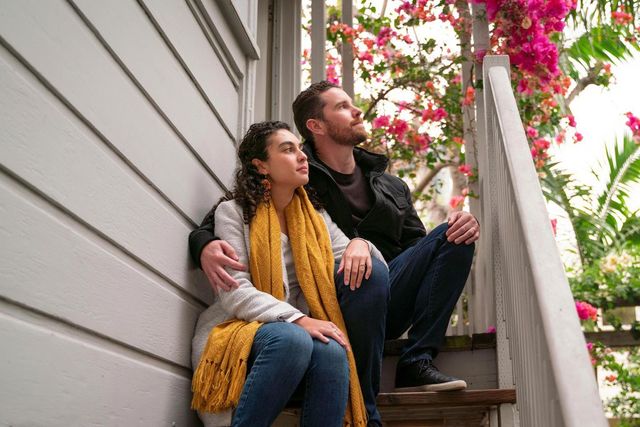
Sarahbeth Maney for The Wall Street Journal
After saving up for a place of their own, and setting off on a year of travel around the world, 29-year-old Andrea Martinez Allen and her husband, Nick Allen, thought their days living with family were numbered. Then came the pandemic.
When Covid-19 abruptly canceled their trip and brought them back to San Francisco this spring, they began to embrace the idea of more permanent multigenerational living. After five months in the house where Andrea grew up, she and Nick are now moving 3 miles away—to his parents’ house.
“When we think about long-term, like who knows how long this will be? We want to be near family. We want to be near people we love,” says Andrea, who works at a health-care nonprofit.
“What’s important? Is it you and your individual needs and wants, or is it, like, for the better of your community?” she says.
The Allens aren’t the only ones rethinking the value of the traditional, single-family setup, wondering if there’s strength in numbers instead. Multigenerational living has been on the rise since 1980, according to an analysis of census data by Pew Research Center. Covid is likely accelerating that trend, much like the 2008 recession did.
This time, there is both widespread economic uncertainty and flexibility for those workers who are newly remote. Many crave the space afforded by their suburban childhoods, need help from family to keep kids’ distance learning on track or worry it isn’t safe to spend time with elderly relatives unless they bubble together.

Sarahbeth Maney for The Wall Street Journal
It’s hard to say how many of these arrangements will persist after the pandemic. But Pew found that 64 million people—20% of the U.S. population—were living in households with at least two generations in 2016, the latest data it’s analyzed. Living arrangements could include grandparents and grandchildren, or parents with an adult child over 25. That’s up from 17% in 2009.
A June survey by the research center found that 22% of 9,700 respondents had moved due to the pandemic or knew someone who had. Most of those who had moved were now cohabitating with family.
“Multigenerational living is here to stay, whether the bump up it gets during the pandemic is temporary or not,” says D’Vera Cohn, a senior writer and editor at Pew. Many who move in with relatives view it not as a financial setback, but a way to build community and maintain ties.
Andrea grew up surrounded by family. She played with cousins who lived down the street, and her great-grandmother lived downstairs. Next door were her grandparents—the house was separate, but the families left their back doors unlocked and tore down the fence separating the two lots in the back to form a joint yard.
Andrea’s parents worked, so her grandmother picked her up from school, made her rice and beans and Mexican noodle soup and shared stories about the family’s journey from Mexico to the U.S. before she was born.
“I know their lives so well,” Andrea says of her grandparents. Even when her parents were absent—her dad logged nights and weekends as a garbage truck driver—she always felt like there was someone there cheering her on, or yelling at her if the occasion called for it. “I basically had many parents,” she says.
She loved the closeness, but also felt pressure to launch, especially after becoming the first in her family to go to college. She remembers telling herself: Leave the house, be independent, live the American dream.
After her 2018 wedding to Nick, the couple moved into her parents’ house together in what was meant to be a short-term stint to save money. (They pay $750 a month in rent.) Andrea noticed Nick found the transition jarring. He didn’t grow up around extended family. Andrea’s grandmother knocked on the back door bearing salsa; her mother offered to do their laundry.
“It’s definitely close,” Nick says. “I was a little apprehensive.”
There are still moments when it has felt like living in a fishbowl, say the couple, who moved straight back into their old room in May upon returning stateside. They hear her dad snoring through the wall. Andrea’s grandpa walked in on the couple making out in the kitchen.
But mostly this stretch has been a chance to connect with family, especially the older generation. Andrea’s grandmother taught her how to make salsa, and everyone was able to gather to celebrate her 78th birthday this spring without worrying about potential exposure to the virus. Even the fact that Andrea’s sister, also back at the house after Covid-19 upended her senior year of college, overhears the occasional marital squabble has a silver lining.
“It gives me an opportunity to talk about it without feeling like I’m unloading in a way,” Andrea says. “It’s like, oh well, you heard us fight, let me tell you about what happened.”
Nick, at work on a startup called Cutback Coach, which aims to help users build a healthier relationship with alcohol, has grown to appreciate the family time, too. Watching Andrea’s close relationships has helped him foster deeper connections to his own parents, the 32-year-old says. The prospect of moving in with them—where he and Andrea could have more space and potentially start a family of their own—began to feel less intimidating. “It feels like an expansion of our life basically rather than a contraction,” he says.
Now carved into three apartments, the Victorian house where Nick grew up is shared by his sister, her husband and their two daughters, who live on the second floor, and his parents, who live on the top floor. Andrea and Nick are set to move into the first-floor, three-bedroom flat, which had been occupied by renters. (Nick and Andrea will pay rent, too.)
The top two floors have a common space, where Nick’s parents and his sister’s family gather for weekly movie and pizza nights. The sounds of “My Little Pony” often drift up the stairs, reports Nick’s dad, Mark Allen, who occasionally wishes he could close off the area a bit more. But overall, Mark and his wife, Barbara, both 70, say they love having their grandchildren close. They get to share informal moments—like breakfast in pajamas or celebrating the immediate excitement of a lost tooth—without the weight of full-time caregiving.
“I’m not exhausted, I’m not stressed out every second,” Barbara says. “We get to kick back a little and just enjoy them.”
Everyone pitches in, whether it’s helping out with child care or grabbing groceries. Andrea says she sees the appeal in the setup: things like buying in bulk and swapping babysitting services save money and promote sustainability.
Some nerves linger as the move-in date approaches: Will the little ones overwhelm Nick and Andrea? What about adjusting to different communication styles? And how will everyone handle the logistics of the house—say, deciding what to put in the backyard or how to divvy up costs when things like a new roof are needed? The adults have talked about setting some ground rules, and agree that Nick’s parents get the deciding vote on big issues.
“It’s not a complete democracy,” Mark says.
But mostly, everyone seems excited to begin this new phase—what Nick describes as a chance to “build a community,” especially at a moment that has made isolation the default for so many.
“We know each other, but not really as adults,” Barbara says. “That casual living together is going to be a real gift.”
The post What You Gain, and Sacrifice, When You Move Back In With Parents appeared first on Real Estate News & Insights | realtor.com®.
